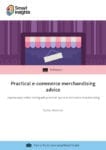Chart of the Week: 36% of people have used visual search and over half say that visual information is more important than text when shopping online
Over a third of people have used or performed a visual search, according to new research from Intent Lab. A total of 36% of survey respondents said they have used visual search, which is the same rate as those who have performed voice searches, showing that search is changing.
As well as the rise of visual search, 59% also said that visual information is more important than text, showing that you should be incorporating visuals into all aspects of your marketing strategy.
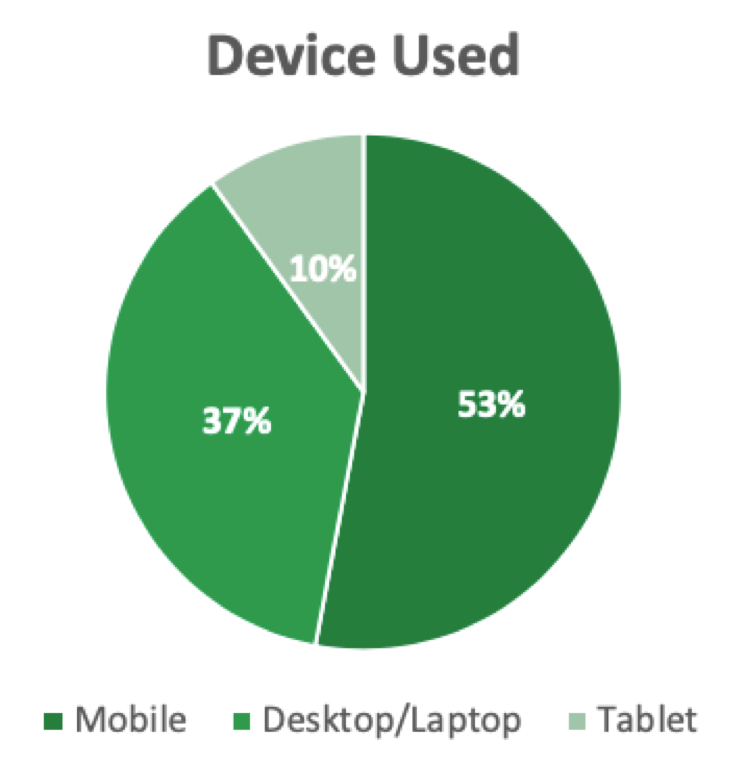
Mobile is more visual
When it comes to visual search, mobile is the most popular device with 53% saying their smartphone is the main device they use for this type of search. This is largely unsurprising due to the visual nature of social media, the ease of use due to portability and the fact that mobiles have cameras incorporated.
This suggests mobile optimization, as well as your social media strategy, should largely be image led. Providing eye-catching and memorable images helps to put across information quickly and easily, as well as being ideal for visual search results.
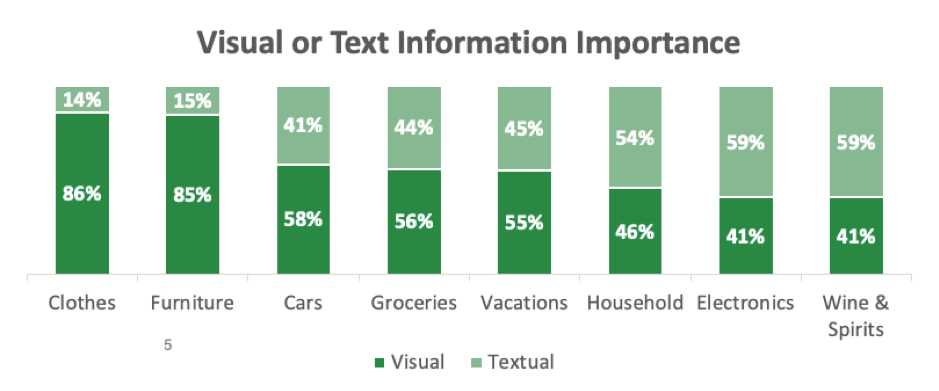
Images are key when online shopping
The majority of consumers believe visual information to be more important than text when it comes to online shopping.
In fact, the only three product types where text is seen as being more important than images are household, electronics and wine and spirits. This is likely due to the fact that specifications and descriptions are required in order to ensure the suitability of a product.
Comparatively, a huge 86% of people believe that images are more important than text when it comes to buying clothes and 85% agree when purchasing furniture. Cars, groceries and vacations were all slightly more even with 58%, 56% and 55%, respectively, saying images were more important when purchasing these things.
While it’s hard to deny that text is still an important aspect of product listings, both in terms of SEO and informing the customer, the current trend shows that a range of images – such as simple product shots and lifestyle photos – could be more beneficial and influence sales.
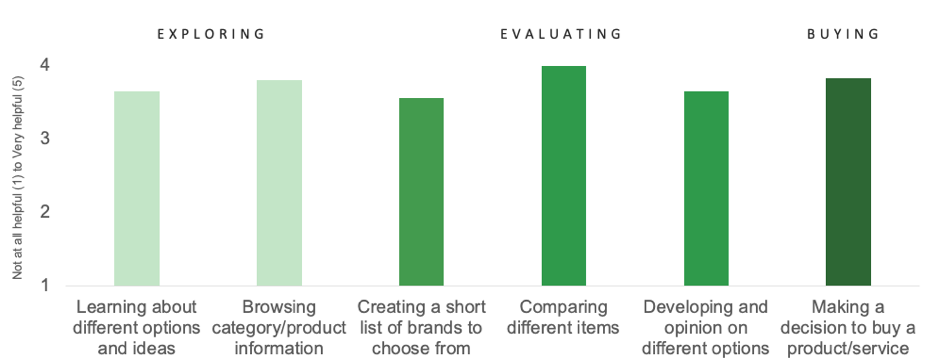
Images aid with comparison
One of the things that visual information helps with the most when it comes to online shopping is comparison. Around 41% of survey respondents said that they find images helpful when comparing products.
Visual information allows shoppers to look at and compare aspects that they see as being important but that retailers may not necessarily include in their text descriptions. For example, when it comes to clothing, shoppers can compare the fit, quality, colour and matching items, making purchase decisions easier.
In terms of the exploring stage when online shopping, respondents said they find visual information helpful when it comes to learning about different options and ideas, as well as browsing category and product information.
Download our Business Resource – Practical e-commerce merchandising advice
ur guide takes you through the essential practices of e-commerce merchandising to help you connect your shoppers with the right product.
Access the Practical e-commerce merchandising advice
Visuals help in these regards, especially when browsing on mobile, as people are able to scroll through product listings and base their opinions on the images. The pictures can then encourage them to click through to view more details.
When evaluating products, as well as aiding with comparisons, visuals help shoppers create a list of brands to choose from and develop opinions on the different available options. The better the images, the better products look, helping shoppers keep your brand in mind.
The final part of the process is making the decision to buy a product. The majority of respondents said that visual information is very helpful at this stage also, suggesting that failing to use images could affect conversion.
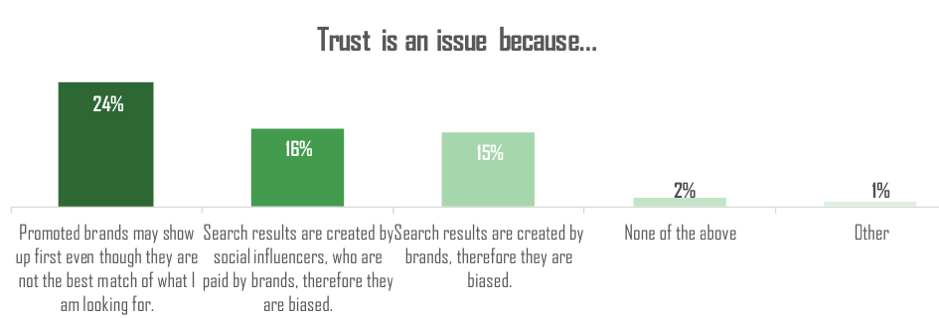
Lack of trust affects visual search
Despite the rise in visual search, trust is still a big blocker when it comes to more people adopting it. A total of 37% of respondents said that trust is the primary factor stopping them from relying on visual search, while a further 26% said that privacy was an issue.
The main trust issue for consumers is the fact promoted items show up first, despite the fact they may not be the best match. Some 24% of respondents said that this is the main issue they do not fully trust visual search.
Respondents also do not trust the fact that many visual search results are created by social influencers who are paid by brands. This means that their posts and reviews can be biased and so do not offer an accurate representation to those searching for products. Similarly, 15% of respondents said that search results are created by brands, also making them biased.
Ensuring that your visual search strategy incorporates user generated content, is as natural as possible and any ads are well targeted could be key factors in helping to improve customer trust when it comes to visual search.
Final thoughts
While visual search is far from the most popular type of search, it is on the rise and consumers are already viewing imagery as being more important than text. Ensuring that your images, as well as your written content, are optimized can help improve results no matter how people are searching.
Taking a more visual approach to your marketing, especially on social media and when it comes to product pages, can also help to improve brand awareness and conversion. Offering imagery throughout the buyer journey can help ensure your customers have all the information they need to make a decision. You can also incorporate user-generated content to give balance out with your more “biased” content.
Relevance is still a factor and needs to be taken into account. Suggesting a product that is nothing like the one being searched for is likely only to damage brand reputation and trust. Look at visual search ads and ensure they are targeted correctly and accurately. Offering the right alternative can improve conversion as your product will be totally relevant.






